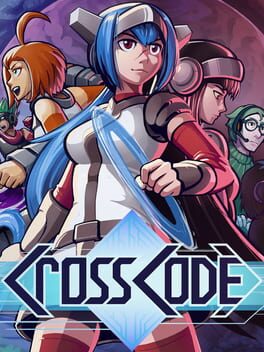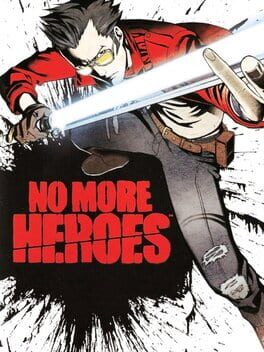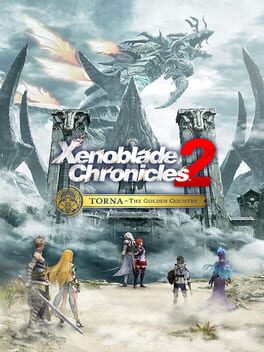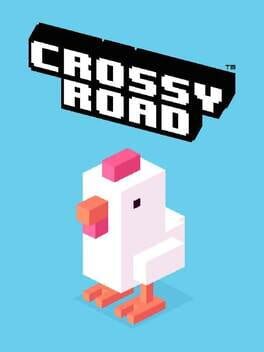willn46
College student, aspiring game designer/writer, #2 Xenosaga fan and professional Shrek Enjoyer
He/Him
19
PFP by : https://twitter.com/blearthrew
Badges

Trend Setter
Gained 50+ followers

Shreked
Found the secret ogre page

Treasured
Gained 750+ total review likes

On Schedule
Journaled games once a day for a week straight

Gone Gold
Received 5+ likes on a review while featured on the front page

Adored
Gained 300+ total review likes

Elite Gamer
Played 500+ games

1 Years of Service
Being part of the Backloggd community for 1 year

GOTY '23
Participated in the 2023 Game of the Year Event

Pinged
Mentioned by another user

Gamer
Played 250+ games

Loved
Gained 100+ total review likes

Well Written
Gained 10+ likes on a single review

Organized
Created a list folder with 5+ lists

Listed
Created 10+ public lists

Popular
Gained 15+ followers

Best Friends
Become mutual friends with at least 3 others

Noticed
Gained 3+ followers

Liked
Gained 10+ total review likes

Donor
Liked 50+ reviews / lists

N00b
Played 100+ games

GOTY '22
Participated in the 2022 Game of the Year Event
Favorite Games
799
Total Games Played
032
Played in 2024
099
Games Backloggd
Recently Played See More
Recently Reviewed See More
First and foremost, Xenoblade 2 is an absolutely beautiful video game. Every location is absolutely stunning, sporting a distinct visual identity that’s always pleasing to look at. Gormott is a vast, sprawling plain with the endlessly cozy village of Torigoth tucked away in its corner. Uraya’s cool color palette across its vast swampland and beautiful Saffronia trees perfectly complements the comfort of Garfont Village and elegance of Fonsa Myma. Tantal’s harsh, snow-covered wasteland filled with ancient architecture builds a brutal backdrop for a desperate village struggling to survive. On top of that, Monolith took great care to make these places feel real. Every town is fully populated and every inch of wilderness teeming with wildlife.
It’s not just the locations that look good, either; every element of the game, from effects to menus, is perfectly stylized to fit the pseudo-sci-fi/fantasy world. Character design’s great too, with the game boasting a set of distinct cultures across the different titans in styles of dress and some absolute banger designs for the blades done by a variety of artists. Yes, I know it’s tempting to post a picture of Rex on Twitter with no context and say, “look at this idiot” or to post a picture of Pyra with no context and say, “dumb fanservice game”. But that’s ignoring the work that went into making a lot of creative, awesome-looking characters (and the fact you can easily get used to how Rex and Pyra look within an hour of playing the actual game).
Speaking of awesome, creative things, let’s talk about this game’s soundtrack. Every piece is an absolute banger and fits perfectly within its place in the game. The title screen immediately hooks players in, perfectly sets up the game’s sense of quiet contemplation, and later serves as a background piece in some of its most emotional moments. Each level theme perfectly captures the feel of the area it plays in, from the bustling trade hub of Argentum to the vast wonder of Gormott to the serene beauty of Uraya. The standard battle theme is on the same level as most games’ final boss themes, and every other one brilliantly accents its fight: the savagery of “Deathmatch with Torna”, the over-the-top showmanship of “Bringer of Chaos: Ultimate”, and “One who Gets in Our Way” seamlessly transitioning from the terror of getting spotted by Rotbart to the euphoria of felling a fearsome foe. Even the cutscene music is outstanding. “Counterattack” and “Over the Sinful Entreaty” are outstanding background tracks to some of the game’s coolest moments, “Past from Far Distance” is almost as haunting as the scenes it plays over, and songs like “Friendship”, “Walking with You”, and “Tomorrow with You” perfectly encapsulate the tenderness of Xenoblade 2’s best scenes. I can barely listen to the credits theme without tearing up.
On the topic of audio, the game’s English dub is often a point of contention. I get it, especially coming off of Xenoblade 1. Certain deliveries can feel a bit awkward, and you can get the sense that lines were recorded out of context. That said, I don’t think it’s bad, besides a couple things like Rex’s screams and Obrona’s voice. In fact, there are some great deliveries here, with characters like Zeke and Malos having especially entertaining voices behind them. I also love how the characters from different countries, as well as the blades, all have distinct accents. It’s a cool bit of texture that further develops the different cultures of Alrest, plus a lot of them just sound nice (I could listen to Morag and Nia talk all day).
All this style would mean nothing if the game didn’t have substance to back it up, and I am happy to report this game has substance in spades. Those beautiful locations are all fully realized semi-open worlds, with most of their landscapes being traversable. On top of the massive open spaces, every area is intricately designed with tons of memorable locales hidden away for players willing to explore. And these areas aren’t just big; they’re loaded with content. Every inch of every level has something interesting: a sidequest, a treasure trove, a landmark or secret area, a heart-to-heart, a unique monster, or even just a strong enemy. The size of the worlds is also perfectly tuned, making them big enough to feel impressive but small enough to be traversable. And the challenges each area introduces with side content, blade quests, and higher-level enemies means you can keep coming back to these places for the entire game. The towns are equally impressive, with a variety of buildings, shops, NPCs, hidden areas, and tons of dialogue serving up tons of content both from a story and gameplay standpoint.
Also, the Field Skills aren’t that bad. Sure, switching blades around to get the right skills in your party is annoying, but that’s it. It’s an annoyance, and nothing more. Nearly every skill check in the main story (and like, 80% of checks in side quests) can be cleared with guaranteed blades, and the process to unlock individual skills is very quick, requiring a few battles at most. Hell, the only time you need to pull blades for the main story is to clear the spider web in Chapter 7 (and even then, getting 1-2 common fire blades is trivial). It’s a minor bump in the road that doesn’t take away from the fantastic exploration. In fact, the focus on world design and exploration alone makes Xenoblade 2 an incredible video game.
But it’s not content to be incredible. It has to be the best there is, and “the best there is” is the best description I could possibly give for Xenoblade 2’s combat. Yes, it takes a while to get the full extent of it, but once you do, there’s nothing else like it. It takes the rhythm of a turn-based RPG and seamlessly transitions it into real time, making the player keep track of positioning, healing, enemy aggro, and Art usage. And on top of that, it introduces some truly phenomenal mechanics that elevate it above the other games in its series.
On paper, 2’s combat may look like a downgrade from the previous installments: you can’t Auto-Attack while moving, your Arts charge based on Auto-Attacks instead of cooldowns, and you only have 3 Arts per character. But look a little deeper and you’ll see how much it really adds. If you start moving and then stop, it resets the Auto-Attack timer, enabling the very useful and probably unintentional technique of “stutter-stepping”: continually move slightly to repeatedly perform your first Auto-Attack, speeding up combat even in the game’s early stages. Even beyond this, I enjoy the decision-making it presents: Do you stand still to deal more damage and charge your Arts or do you try to pick up items, grab HP Potions, and revive fallen party members? Speaking of Arts, the detail about only having 3 Arts is a straight-up lie. Each character can equip up to 3 Blades, which each have 3 Arts, 4 Specials, and their own unique abilities. This change in format gives the player plenty of freedom in deciding their loadouts, forces them to manage Blade cooldowns on top of other combat mechanics, and lets the game map arts and specials to the 4 main buttons, reducing the amount of necessary menuing in combat.
On the topic of Arts and Specials, I think it’s about time I explain the meat of the combat. As previously stated, using Auto-Attacks lets you use Arts, which lets you use Specials. Using Specials lets you perform Blade Combos, which can set up Orbs that let you perform better Chain Attacks. And if you break enough Orbs in a Chain Attack, you deal insane damage with a Full Burst. This also grants you additional EXP if you kill an enemy, which all but eliminates the need for grinding when used properly. Speaking of Blade Combos, each Blade Combo deals increased damage and damage over time, even at lower levels. Ergo, even if you don’t finish a Combo, you can still deal good damage to the enemy.
Xenoblade 1’s Break/Topple system is also reworked into Driver Combos. In 1, the best strategy for harder fights was to break enemies and then continually topple them until they could no longer move, which could feel a bit stale. In Xenoblade 2, Break and Topple have much more limited durations, but Toppled enemies can be Launched and Launched enemies can be Smashed. Launched enemies take more damage than Toppled enemies, and Smashing an enemy deals massive damage and spawns items. All stages of a Driver Combo also spawn HP Potions, increase the DOT and uptime of Blade Combos, and interrupt enemy Arts. This creates a much more dynamic system where you can constantly perform small actions to gain the advantage over the enemy, but there’s also a degree of risk when your Breaks don’t hit and you have to retry. Performing a Blade Combo while the enemy is inflicted with a Driver Combo also performs a Fusion Combo, dealing even more damage. On top of all that, Blades’ affinity increases over the course of a battle and grants you buffs when it maxes out.
This turns every combat encounter into a satisfying series of loops, where every attack builds into the next. At the start of a fight, you’re at your weakest, only using Auto-Attacks and a few Arts. But as the battles progress, your options open up. You start using Specials and Blade Combos to deal damage. You perform Driver Combos to gain advantages over the enemy and maybe even get a few items. And when your Party Gauge fills up and you’ve applied a few Orbs, you can unleash a Chain Attack and deal massive damage. There are few feelings in gaming as satisfying as performing a Full Burst.
And all throughout, the Cancel Attack system enhances the very experience of fighting. In a similar vein to Mario RPG’s timed hits, Cancel Attacks give you an advantage in combat if you press a button just as an attack connects. Auto-Attacks, Arts, Specials, and even Blade Switches flow seamlessly into each other for extensive chains of high damage and powerful effects. And the sound design just adds on to the satisfaction. Every attack feels crunchy. The feedback for cancelling makes the combos you pull off exponentially smoother. The cinematic angles for Blade Combo Finishers, Level 4 Specials, Fusion Combos, and Chain Attacks help them hit that much harder.
The combat does take a while to get into. You don’t unlock all the mechanics until the end of chapter 3 and it takes a bit longer than that to get all the really cool stuff. Needing to unlock Arts Chaining and 3 Blade slots especially can be a pain in the ass. The tutorials don’t help, either; they’re way too vague for a system this complex and it sucks you can’t re-view them. Also, the game never tells you how good the Art Recharge items are, which makes the early game a lot slower than it needs to be for most players. But if you’re willing to push through those early hours, to really sink your teeth into the battle system and unlock its full potential, there’s nothing else like it. (I recommend [this video]( https://youtu.be/b8P7KhFSA2w?si=YfFJvaMMjK-M6Z__) if you want a good tutorial).
The combat system is fantastic on its own, but it’s backed up by equally amazing character customization. Like I said before, each Driver in the party (with 1 exception) can equip up to 3 Blades at once. Each Blade increases the Driver’s stats, as well as having their own weapon class and element. Element determines what Blade Combos a Blade can perform as well as dealing more damage if an enemy is weak to it. Weapon classes and the Drivers they’re attached to determine which Arts a Blade can use, with 3 out of a potential 4 being usable at any time. The more a driver uses a specific weapon, the more they can upgrade the Arts for that weapon, granting stronger effects and lower recharge times. In addition, each Driver has an Affinity Chart: a skill tree you gain points for as you defeat enemies and complete quests. These grant some pretty useful passive skills, including the aforementioned Arts Chain. All these systems combined with 5 Drivers that can fill a 3-Driver party and the wide variety of Blades already offer a ton of options and a steady sense of progression throughout the game.
But then the Accessories and Pouch Items shoot the scope of customization through the roof. All drivers can equip up to 2 accessories (3 in New Game Plus). These grant passive bonuses ranging from stat increases, to damage increases, to more specific uses like reducing enemy break resistance or preventing enemies from blocking your attacks. One Driver can’t use multiple accessories with the same effect, but otherwise you can do pretty much anything. Each Accessory can completely change how you play the game, assisting in a variety of strategies and synergies. Pure attack, tanking, evasion, crit healing, and even soloing enemies are all possible thanks to this system. Pouch Items are really cool too, essentially being passive buffs you can give to your Drivers for a certain amount of time. Eventually, you can even equip 2 at a time, offering additional customization and power. Like I said before, the Art Recharge ones are the best, but other effects like Special Recharge and Increased Party Gauge can also be useful.
On top of all of that, Blades have their own customization and progression systems. Core Chips grant steady increases to attack power while offering a choice between Block Rate, Critical Rate, and various secondary effects. Aux Cores grant additional effects that help you deal more damage, take less damage, avoid attacks, and do tons of other things. Even more impressively, each Blade has its own Affinity Chart. As you fight and complete side quests with a Blade, you increase their trust with their Driver. In addition to increasing their damage, this unlocks the nodes in their Affinity Charts. Filling in those nodes is a bit more complicated: each one has specific actions tied to them, ranging from using Specials to defeating enemies to completing side quests. I love this; it encourages players to constantly use all the different mechanics and keeps progression from feeling stale, since you’re doing different things to get stronger rather than grinding. The nodes themselves offer a few different things: Red Nodes improve Blades’ Specials, Yellow Nodes improve Passive Skills, and Green Nodes unlock Field Skills.
This gives Blades a ton of utility in different strategies, which is only compounded by the Accessories, Core Chips, and Aux Cores. You could go for pure damage with heavy hitters like Mythra or Herald. You could use tank-class blades like Brighid to evade attacks. You could build entire strategies around blade-specific mechanics, like Dagas’ Kaiser Zone or Adenine’s boost to elemental weakness damage. And this is before you get into Tora and Poppi, who not only can perform Driver Combos by themselves, but have a unique progression system that lets you fully customize the abilities of all 3 Poppi forms. It’s truly incredible.
Now, there is one part of this system that often falls under scrutiny, and I do understand it: The Core Crystal Gacha System. Basically, a good chunk of the game’s Rare Blades are locked behind random drops from specific items. It can be annoying when you want a specific Rare Blade but can’t pull them, or when you do get that Blade on a different Driver than you wanted. That said, I think a lot of the criticism is overblown, and a good chunk of it probably stems from people’s gut reactions to the words “Gacha System”. First off, there are no microtransactions involved. All resources are earned by playing the game normally. In reality, the Core Crystal system barely differs from most RPG drop systems, and people never throw fits on Twitter about those. In fact, the game is actually really generous with Rare Blades: a lot of really good ones can be earned through either the main story or through side content. Plus, Common Blades are better than you might think, offering good stats, good Specials and some really useful Passives like Orb Master. That’s ignoring how generous the base chance is for getting Rare Blades and how easy Legendary Core Crystals are to farm later on. Is it a perfect system? No, it can be a hassle to get the last couple Rare Blades in the endgame, the game’s a bit too stingy with Overdrive Protocols, and there are probably better ways to encourage switching up your team on replay. But it’s not nearly as bad as it’s often made out to be. At worst, it’s a small blot on an astounding canvas.
There’s a lot more to do in Xenoblade 2 than just exploring the world and fighting things. Sure, those are your main means of interaction with the game, but there’s some pretty neat context surrounding them. Xenoblade 2’s sidequests are great, both from a gameplay and story perspective. They grant a variety of tasks, which mainly involve collecting items, fighting enemies, and exploring certain locations. While that might sound a bit repetitive, the way these basic elements are combined keeps the quests from getting boring. In addition, they all have pretty neat stories tied to them, some even extending through multiple sidequests. The quest chain involving the organizations in Mor Ardain is the obvious highlight, but I also love the Nopon History quest chain, the one where you build a school, the quest in Gormott involving the missing soldiers, and anything involving the Garfont Mercs, just to name a few. Even the smaller quests do a great job fleshing out the world and giving character to the various NPCs. You learn a lot about the different nations of Alrest just from seeing how these people interact in their day-to-day lives.
Blade Quests are another great addition. Every optional Rare Blade has their own dedicated side story, complete with fully voiced cutscenes. These help elevate the Blades from just being numbers on a sheet to being fully defined characters, with certain ones like Dagas having really good arcs throughout their quests. And of course, the Xenosaga fan in me will always appreciate KOS-MOS getting story relevance, even if it is self-contained.
Not only are these quests intrinsically engaging, but they offer great rewards. You get additional EXP, money, and SP (for Drivers’ Affinity Charts) for each one you complete. Blade Quests even grant additional abilities for the Rare Blades. This constant stream of rewards creates this really satisfying gameplay loop of completing quests, getting stronger, and taking on tougher quests. If you’re worried about becoming overleveled after doing all the side quests, don’t worry; all EXP gained from quests is completely optional. Don’t get me wrong, there are some stinkers among the quests. Ursula’s Blade Quest and the Nopon Doubloon quest are pretty annoying, and the compass isn’t too helpful for certain navigational challenges. But the batting average is pretty damn high, and the side quests are overall one of my favorite parts of the game.
If that wasn’t enough for you, Xenoblade 2 offers additional side content to keep you busy. Completing side quests and buying items in an area increases that area’s Development, which lowers prices and opens up new items in the stores. Buying all the items in a store even lets you buy the store, which grants a passive buff during overworld gameplay. This a lot to the game mechanically and thematically, since you’re helping people around the world through your actions and have much greater incentive to interact with the different shops. I also really like Salvaging as a way to integrate Rex’s passion into the gameplay and as a means of making money. (Seriously, you can get a ton of money with just a little salvaging. It’s insane.)
The last major mechanic I want to talk about is the Merc Group, which basically lets you send your idle blades on special missions. These are often used for Blade Quests, normal quests, and unlocking more of a store’s inventory. They also grant additional EXP, money, items, and help unlock skills for the blades. I love this feature. It adds to the sense of progression since you’ll probably have a Merc Mission running at all times, and also helps if you want to develop a Blade without using them in combat. It also makes all the blades feel useful, since you’ll often need specific field skills to start a Merc Mission or to have it complete faster. All this great content doesn’t even cover the additional difficulty modes, New Game Plus, or Challenge Mode, all of which add fantastic depth and replayability just by themselves. With all these different mechanics combined, Xenoblade 2 is a masterwork of game design.
But there’s far more to it than that. Many people say an RPG is only as good as its story, and this story is certainly as good as the RPG behind it. The story of finding hope in a dying world is done beautifully, and leads to quite possibly the best final act I’ve ever seen in a video game. It’s exciting, well-paced, and isn’t afraid to go dark places, but still remains a heartwarming and optimistic tale throughout. I won’t go into detail here for the sake of keeping this review spoiler-free and not tripling its length. Instead, I’d like to dispel a popular myth surrounding this game. Many people have claimed the story is “tropey anime garbage” and that it doesn’t match the serious tone Xenoblade 1 had. Yes, the story has silly moments, but they pretty much vanish halfway into Chapter 4, and they never interrupt the more serious parts. There are only 10, maybe 15 minutes of these scenes over the course of a 100+-hour game. If that’s enough for you to dismiss a game, then I’m sorry, but I think that’s incredibly shallow. Plus, this game can actually be really funny when it wants to. Throwaway lines like Pupunin’s “wife ran out on me”, Heart-to-Hearts like the cooking disaster in Argentum, and pretty much everything involving Zeke von Genbu just make me crack up. Not to mention, Xenoblade 1 has plenty of light-hearted moments: Colonel Vangarre, Riki’s introduction, half of Reyn’s dialogue. Hell, one of the most emotional scenes in the game was turned into a meme by the fandom, which got big enough for Nintendo of America to post about it on Twitter. I think at least a little comedy is fully acceptable.
This fantastic story is backed by an even better cast. Every member of the main party is memorable, well-written and has at least a few great moments throughout the story. Sure, Morag and Brighid are a little underused and Tora has some…questionable moments, but that doesn’t make the overall cast any less memorable. Each of them supports the game’s central themes in some way, on top of having some great interactions both in the main story and outside of it. The villains are just as good, easily being my favorite cast of antagonists in all of Xenoblade. All the major antagonists and even a few of the minor ones have interesting roles to play in the story, complex motivations that intertwine and often clash, and wonderfully interact with both the thematic material and the main characters. Again, I won’t go into spoiler territory, but there is one character I will talk about quite a bit.
Rex is a fantastic main character. Sure, he may look like a dorky kid with a stupid outfit and subpar voice acting, but give him a chance and you’ll know why this kid made himself the Aegis’ Driver. Even in a world brought to the brink of destruction, suffering from the mistakes of its people, he keeps smiling. He helps everyone he can, tries to understand even the worst of humanity, and fights for its best. It’s amazing how profoundly Rex impacts the people and places around him just by being the good person he is. Not just Pyra and Mythra, but the other party members, the villains, and all the people you meet along the way. As amazing a portrayal as Future Redeemed gave Rex, it could only do so thanks to Xenoblade 2’s rock-solid foundation. And all this came from a humble salvager with a big heart.
Xenoblade Chronicles 2 will always be a special game to me. It came into my life at an important time and helped my broaden my horizons for what games were capable of. But even considering that, I think it’s a masterwork of game design and storytelling, and my appreciation for it only grows with each passing day. I know it’s not for everyone, but please, give this game a chance if you haven’t already. Don’t dismiss it because a YouTube comedy video made it look bad. I’m sure you’ll find something to love.










